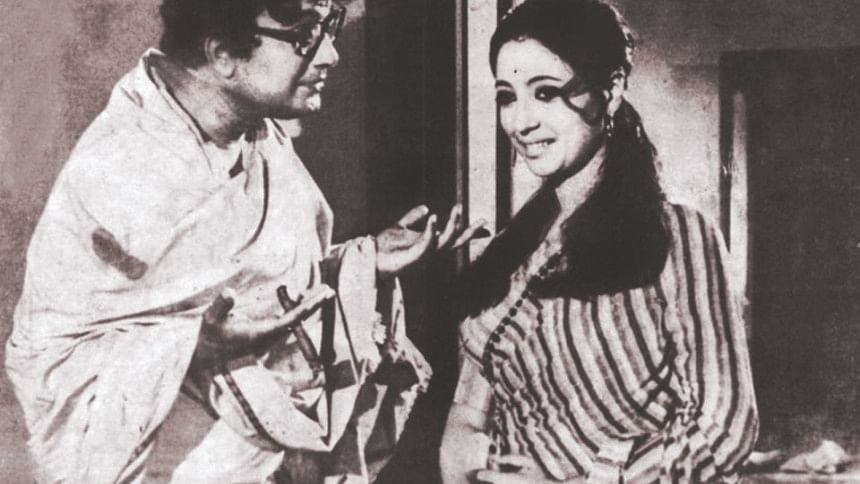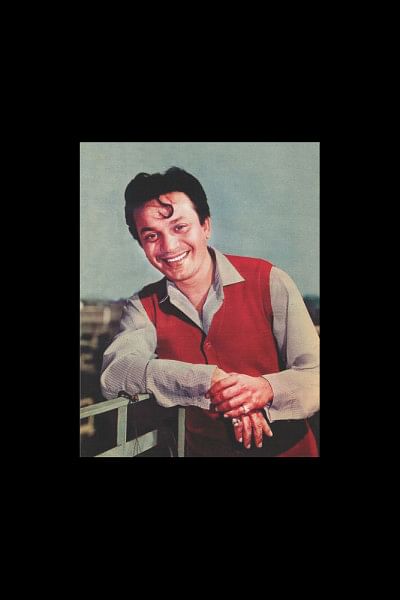Uttam Kumar Uncrowned king of the silver screen

Uttam Kumar's hypnotic screen presence, mellow voice, unique charisma and dazzling smile made him not just a heartthrob, but also a legend of Bangla Cinema. To generations of Bangla film aficionados, he remains 'Mahanayak' (epic hero), the undisputed king of the Bengali silver screen. Today marks his 35th death anniversary.
Born as Arun Kumar Chatterjee on September 3, 1926 at Ahiritola, North Kolkata, he was called 'Uttam' by his maternal grandmother. The extended family had its own theatre group, 'Suhrid Samaj', which staged many amateur shows within the community. Besides acting, young Uttam was also into sports.
After graduation, the financial straits of his family forced Uttam to take up employment as a clerk at the Port Commissioner's office.
In 1947, he received an offer for a cameo role in a Hindi film called “Mayador”. The film never saw the light of day. His first release was the Bengali film “Drishtidaan” (1948), directed by Nitin Bose. Uttam was credited as Arun Kumar in the film, which turned out to be a flop. In 1949, he made his debut as the leading man in the film “Kamona”, crediting him as Uttam Chatterjee. But this too bombed. By then the film industry had labeled him a “flop master”. During this time, he married to Gauri Ganguli (in 1948). Fortunately for Uttam, “Basu Paribar” (1952), co-starring Sabitri Chatterjee, was a big hit.

Uttam delivered another big hit “Sharey Chuattor” in 1953. In the film he was paired for the first time with Suchitra Sen. With “Agniparikkha”, the following year, again hitting the bull's-eye, the Uttam-Suchitra pair ushered in the so-called 'golden era of Bengali cinema'. They went on to become icons of Bangla romantic melodramas for over 20 years, becoming almost a genre in itself.
Their films were famous for the soft-focus close ups of the stars, particularly Suchitra, and lavishly mounted scenes of romance against windswept expanses and richly decorated interiors. The storylines often revolved around a pattern where the lovers would meet and fall in love. And then either the family or difference in status would pose hurdles in the romance. Some popular films of the pair include “Shap Mochon” (1955), “Shagorika” (1956), “Harano Sur” (1957), “Shaptopodi” (1961), “Bipasha” (1962) and “Grihadaho” (1967).
When Satyajit Ray made “Nayak” (1966), he created the role of actor Arindam Mukherjee, keeping Uttam Kumar in mind. Many people feel the film is reflective of Uttam Kumar's own life -- the sense of anxiety and restlessness of the character mirrored Uttam's insecurities about his phenomenal success and abiding fear that his superstardom might not last. Ray later confessed that if Uttam had refused the film, he would have abandoned it. The actor worked with Ray again the following year in “Chiriakhana” (1967).
When the Indian Government instituted the National Awards for Best Actor and Actress in 1967, Uttam Kumar was the first recipient of the Best Actor Award for his performances in “Chiriakhana” and “Anthony Firangee” (1967).
Uttam also tried his hand at Hindi films with the oft-criticised box office bomb “Chhoti Si Mulakat”, a film he produced and starred in, among others that were better received.
A strict workaholic, he was rumoured to have said that his preferred demise would be on the floor of a studio, doing what he loved best, acting. Indeed, that is exactly how he died. While filming “Ogo Bodhu Shundori” in 1980, he died of a massive heart attack at the age of 54.
Compiled by Correspondent

 For all latest news, follow The Daily Star's Google News channel.
For all latest news, follow The Daily Star's Google News channel. 



Comments